Click on images to enlarge
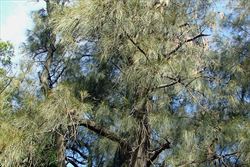
habit (Photo: Sheldon Navie)
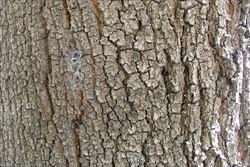
rough bark on main trunk (Photo: Sheldon Navie)

drooping branches (Photo: Sheldon Navie)
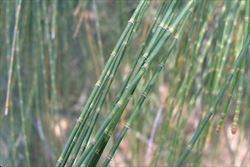
close-up of branchlets with tiny scale-like leaves (Photo: Sheldon Navie)

branches with rusty-coloured male flower clusters (Photo: Sheldon Navie)

close-up of female flowers (Photo: Sheldon Navie)
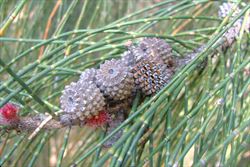
mature fruit (Photo: Sheldon Navie)
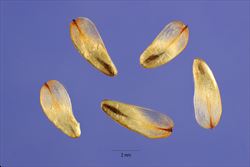
close-up of winged seeds (Photo: Steve Hurst at USDA PLANTS Database)
Scientific Name
Casuarina glauca Sieber ex Spreng.
Synonyms
Casuarina obtusa Miq.
Family
Casuarinaceae
Common Names
Brazilian oak, cadigal, gray sheoak, grey she-oak, guman, long-leaf ironwood, longleaf ironwood, saltmarsh ironwood, scaly-bark beefwood, swamp she oak, swamp she-oak, swamp sheoak, swamp oak
Origin
Native to large parts of eastern Australia (i.e. eastern New South Wales and central and south-eastern Queensland).
Naturalised Distribution
Naturalised in south-western Western Australia, south-eastern South Australia, southern Victoria and the Northern Territory. Also naturalised on Lord Howe Island and on Norfolk Island.
Naturalised overseas in south-eastern USA (i.e. Florida), the Caribbean, La Réunion, Hawaii and New Zealand.
Notes
Swamp she-oak (Casuarina glauca) has become naturalised beyond its native range, particularly on river banks in southern Australia. It is regarded as an environmental weed in Western Australia and South Australia, and is particularly invasive in south-eastern South Australia (e.g. it is a serious environmental weed in the Mount Lofty Ranges).
River she-oak (Casuarina cunninghamiana) and coastal she-oak (Casuarina equisetifolia) have also recently become naturalised beyond their native ranges in some parts of Australia, and are regarded as potential or minor environmental weeds in some regions.

